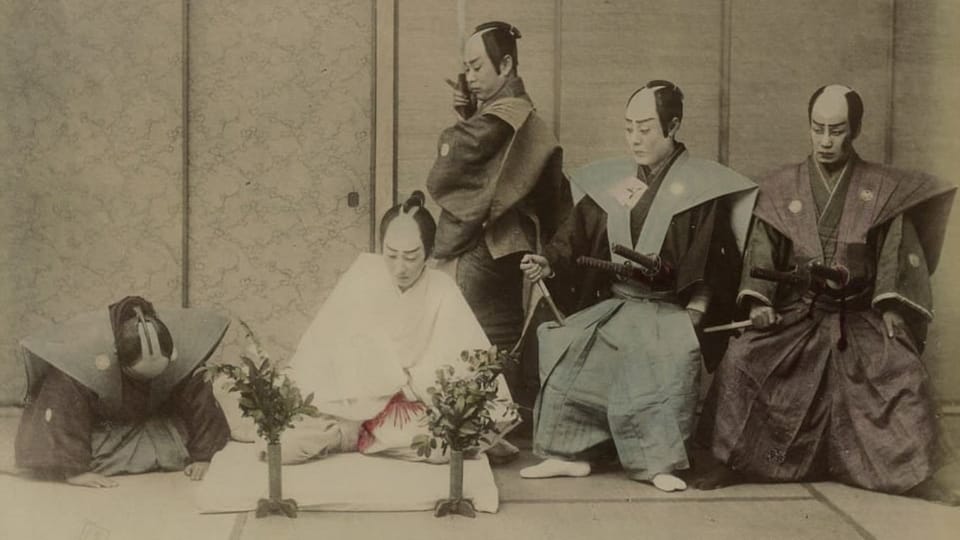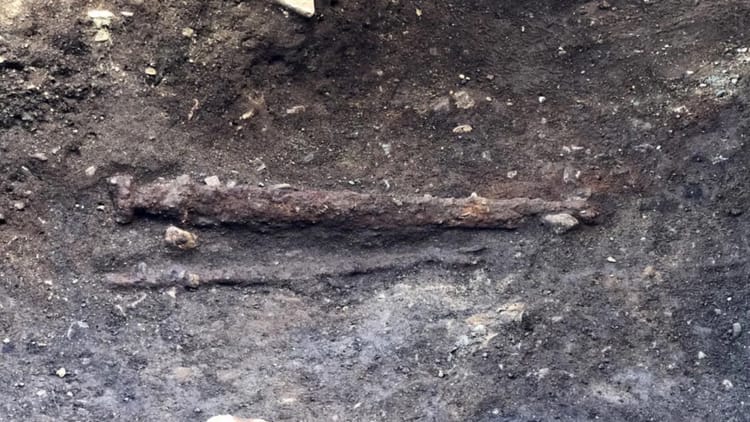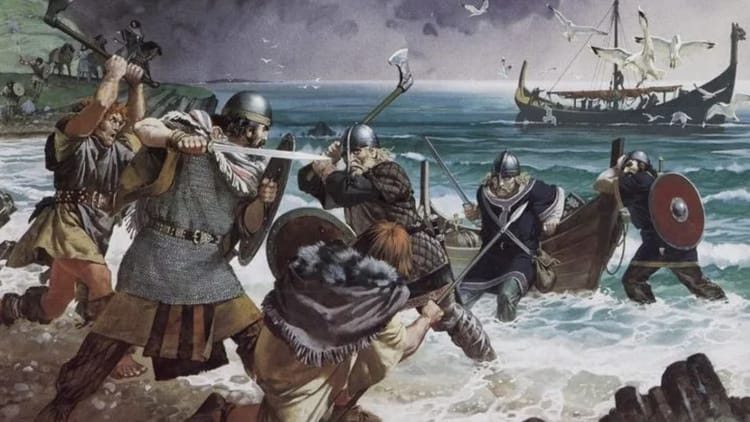Blood, Honor, and the Art of the Clean Cut: The Samurai Ritual of Seppuku

You ever hear about the samurai? I mean, really hear about them, beyond the pretty-ass paintings and the slow-motion katanas slicing through cherry blossoms? These dudes weren’t just warriors, they were walking, talking codes of honor, stitched together with discipline and blood. And when shit hit the fan, when they failed, disgraced themselves, or got caught on the wrong side of politics—they had one way out: Seppuku.
Yeah, that’s the one, ritual suicide. But forget what you think you know, because thanks to some freshly translated Edo-period texts, we’re peeling back the curtain on the real mechanics of this gory ballet. Turns out, seppuku wasn’t just a solo act of gut-spilling despair, it was a two-man job, and the second guy? He had the most important role of all.
So, here’s the scene: You got a disgraced samurai, sitting pretty in a spotless white kimono, like a ghost at his own funeral. He’s been given a short blade, and maybe he’s had a last sip of sake to steady his nerves. He’s about to cut himself open in a precise, controlled movement, but here’s the thing, he doesn’t just bleed out slow and messy. Nope.
That’s where the kaishakunin comes in. The "second." The man with the sword, whose sole job is to make damn sure this ritual doesn’t turn into an undignified, twitching nightmare. His job? A clean, perfect beheading. One stroke. No hesitation. A flick of steel and, boom, just like that, the samurai exits stage left.
Back in the wild days, seppuku was a lonely affair, a desperate, painful, drawn-out act. But as the samurai code got codified and turned into the way of life, the ritual evolved into a goddamn art form. By the Edo period, this wasn’t just about death—it was about precision, grace, and control.
The kaishakunin wasn’t just some random executioner. He had to be skilled, he had to be composed, and most importantly, he had to be ruthless. If he hesitated? If he botched the cut? If he let personal feelings get in the way? That was shame on him. Big shame. The kind that sticks to your name for generations.
The ceremony itself? Every detail mattered. The condemned wore white, not because they were innocent, but because it represented purity in death. The blade, small but deadly, was placed before them like an invitation. They’d make the first cut, sometimes. But more often than not, before the knife even got to work, the kaishakunin was already bringing down the sword.
Why? Because this wasn’t about suffering. It was about presentation. About going out like a goddamn samurai.
One of the translated texts, Secret Traditions of Seppuku, lays it out clear as day:
“It is essential that you do not fail to notice first the eyes and then the feet of the person committing Seppuku. If you fail to do this due to a personal connection with the condemned, it will be proof that you have lost your martial bearing and bring down an eternal shame upon yourself.”
Translation? Don’t choke. Don’t get sentimental. Don’t screw this up. If you do, you’re the next one kneeling in white.
Alright, let’s talk about the cut.
A good kaishakunin didn’t just swing like some drunken butcher. Nah, he had technique. The move was called kaishaku, and it wasn’t just about chopping a head clean off, it was about almost chopping it off.
See, the best of the best didn’t let the head roll away like a bowling ball. That was undignified. Instead, they left a sliver of flesh intact, just enough to keep the head attached, so when the body collapsed, it folded over neatly. Like a final bow. Like a perfect ending to the samurai’s last act. That move? Dakikubi. And if you pulled it off right, you weren’t just some swordsman, you were a goddamn artist.
Now, here’s where it gets interesting. Thanks to Eric Shahan, a translator who’s been digging through these Edo-period texts, we now know just how detailed these teachings were. This wasn’t just about execution, it was about honor, duty, and carrying the weight of tradition. His book, Kaishaku: The Role of the Second, lays out the real expectations behind this duty.
The kaishakunin wasn’t just the guy who held the sword. He was the last witness to a warrior’s final moments. He was the one who had to make it clean, make it honorable, and make it look good. Screw it up, and you didn’t just ruin one man’s death, you stained your own legacy forever.
At the end of the day, seppuku wasn’t just about dying. It was about dying right.
Samurai lived by a code where death wasn’t a failure, it was an option. But it had to be done with grace, precision, and an unshakable sense of purpose. And the kaishakunin? He was the last line of defense against dishonor.
These new translations don’t just teach us about how samurai died. They teach us why it mattered so damn much.
And when you think about it, maybe that’s the part we should be paying attention to.





